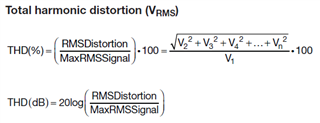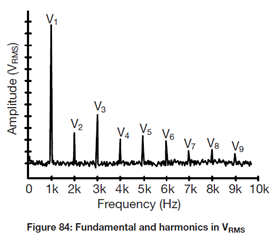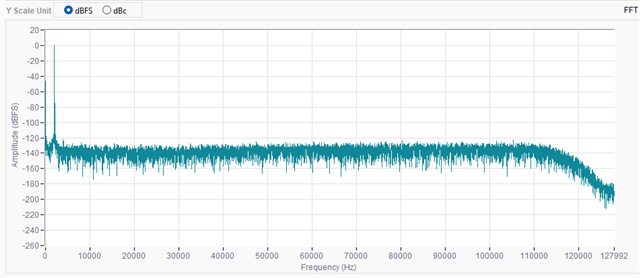- Ask a related questionWhat is a related question?A related question is a question created from another question. When the related question is created, it will be automatically linked to the original question.
This thread has been locked.
If you have a related question, please click the "Ask a related question" button in the top right corner. The newly created question will be automatically linked to this question.
Tool/software:
Hi TI Support Team,
I have data sampled at 1KHz using an ADC. The input signal is a 3.0Vpp 10Hz sine wave. I would like to calculate the SNR and ENOB from this data and have a few questions.
I understand that SNR is calculated by the ratio of the signal power to the noise power. For the signal power, I would take the magnitude at 10Hz, but for the noise power, should I sum the power of all other components or take the average of the power of the remaining components?
From my research, it appears that many sources suggest summing the power of all the remaining components. Is this correct?
If so, I have the following concerns:
The number of bins in the FFT array is equal to the number of input samples, which depends on the duration of the measurement. Therefore, calculating SNR from the FFT result of a 1-second collection versus a 10-second collection would yield a 10-fold difference. Since SNR is a measure of the quality of the ADC circuit, it doesn't seem accurate for the quality to worsen with longer measurement durations.
What is the correct method for calculating the power of the noise components?
Thank you for your assistance.
Hi Daniel Park
Our support engineer for the ADS1602 is out of the office until next week. We will respond to your query at that time
Thanks for your patience
-Bryan
Hello Daniel,
Yes, once you have an FFT, you need to 'sum' the power of all remaining bins for total noise. In the case of RMS voltage levels, you will RSS (root, sum, square) the values to get the total noise power, similar to how you sum the harmonics to calculate THD. In the case of THD, you only add the FFT bins that contain the harmonics, but for total noise power, you add all bins except for the fundamental and harmonics. Adding all bins except the fundamental will give you SINAD (SNR plus THD).


Once you have SNR and SINAD, ENOB is simply calculated using the below formula:

Regarding your second question, the total noise will remain the same regardless of how many samples you collect and the resulting number of FFT bins generated. Keep in mind that each bin represents a frequency width, and as you increase the number of bins (samples), the frequency width of each bin is reduced, which also reduces the total noise the FFT calculates for that bin.
Below is an example of an FFT on the same input signal taking 32k samples verses 2Meg samples. You can see the noise floor is reduced, but the total noise once summed together will be equal.
32768 samples (noise floor less than -130dB):

2097152 samples (noise floor less than -145dB):

Regards,
Keith Nicholas
Precision ADC Applications